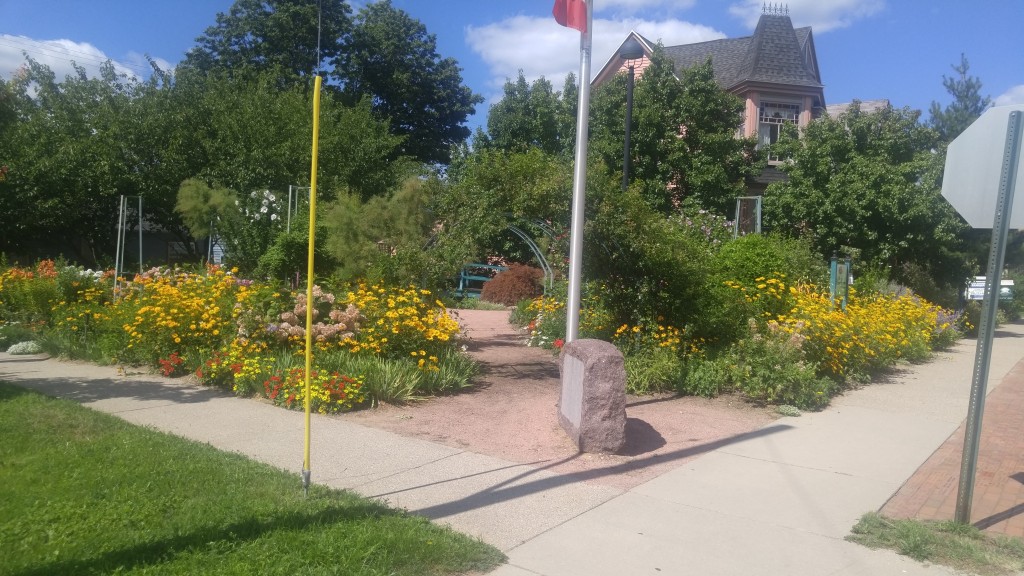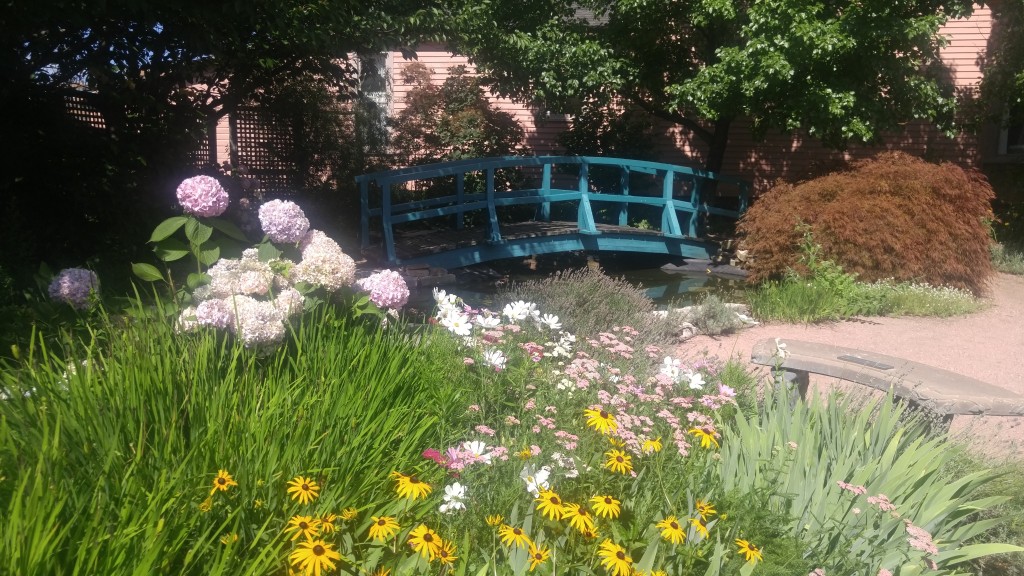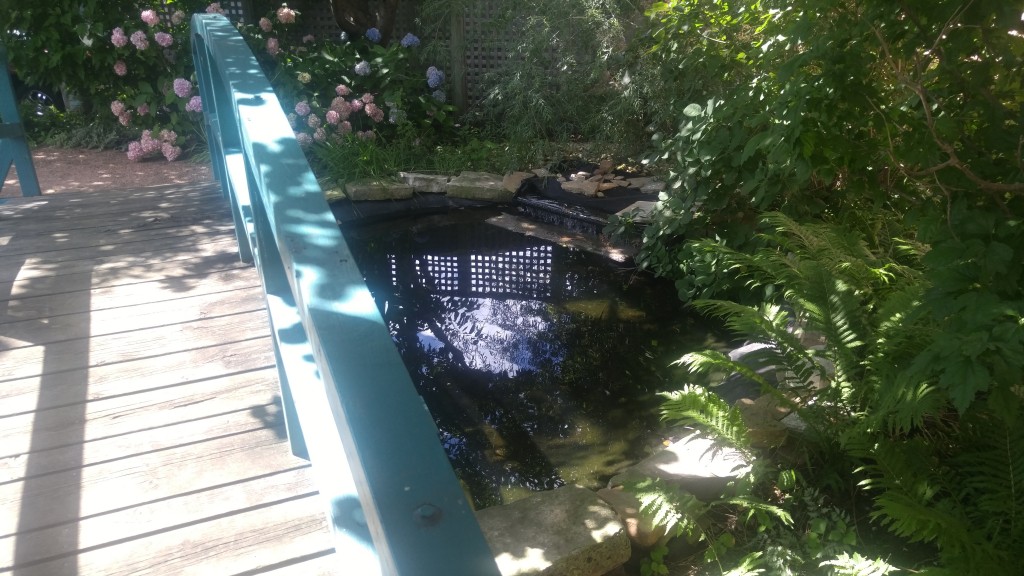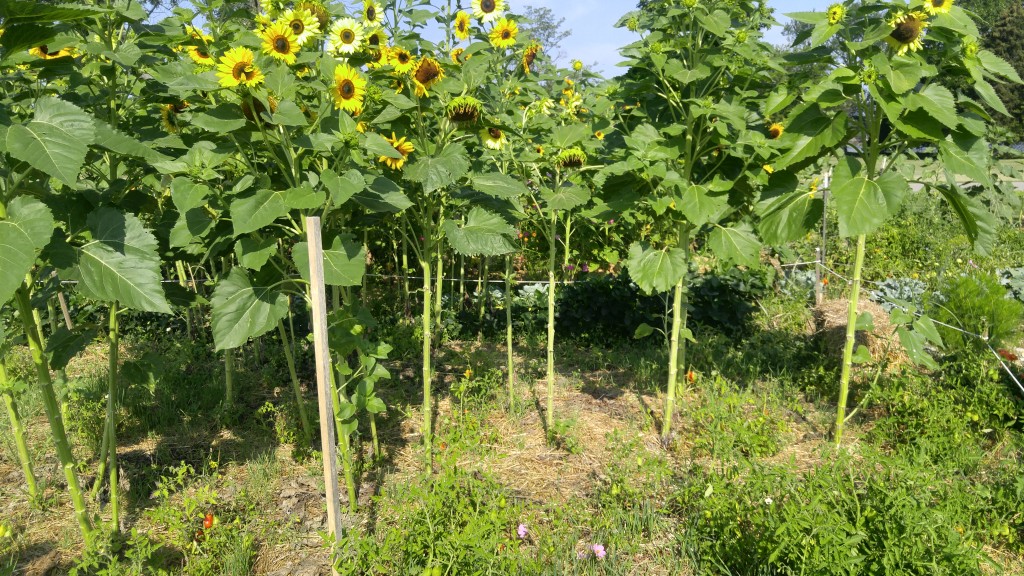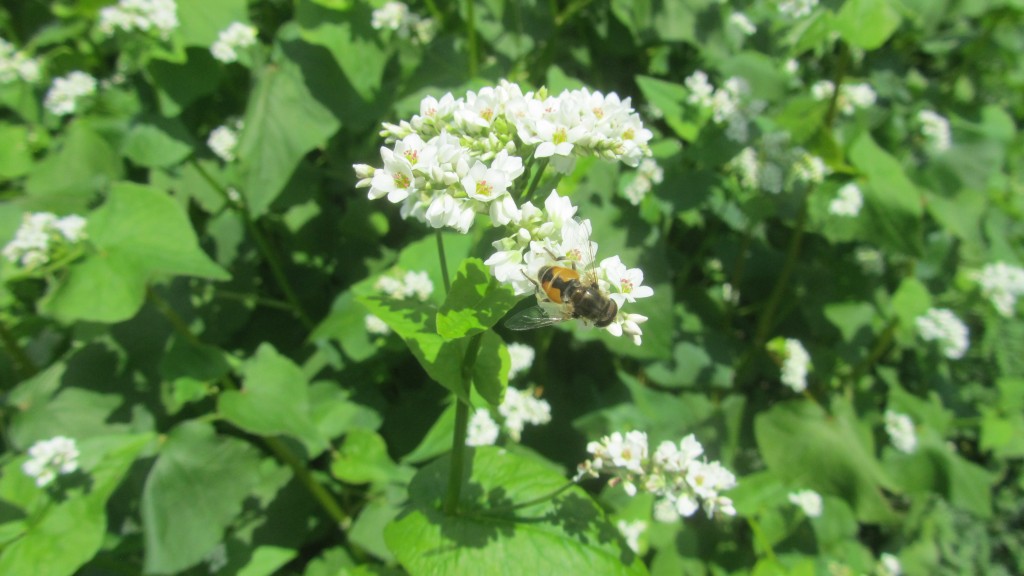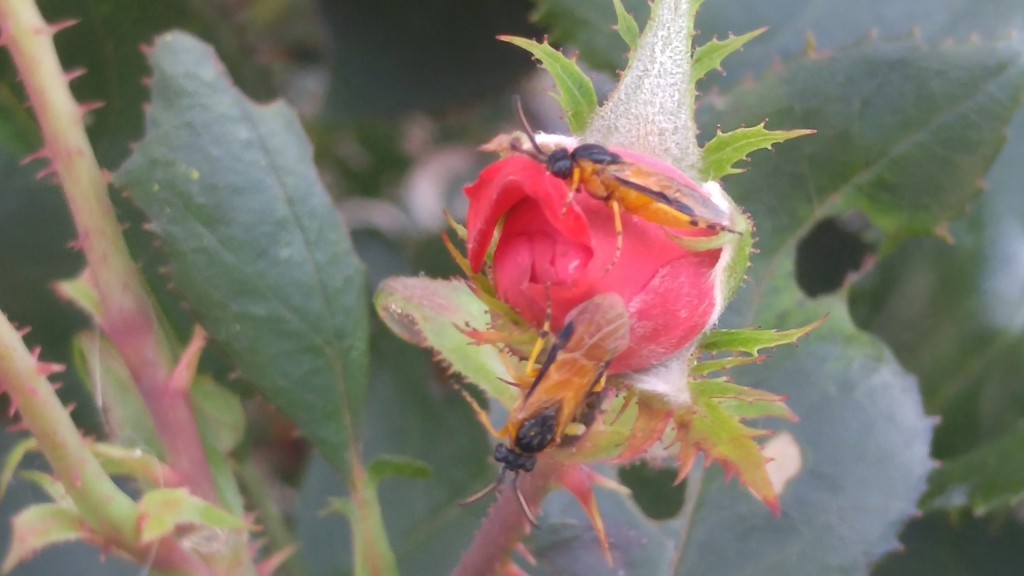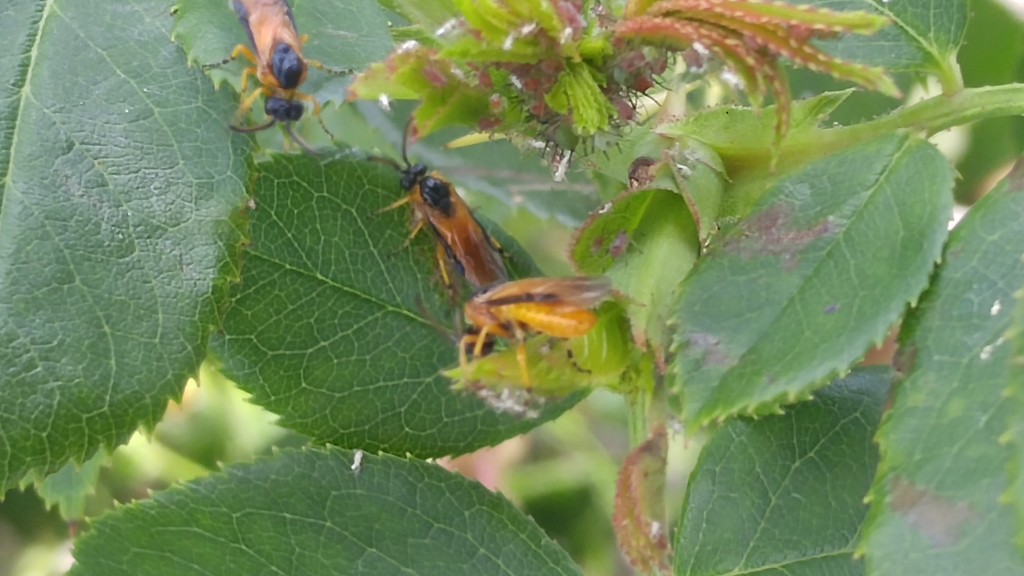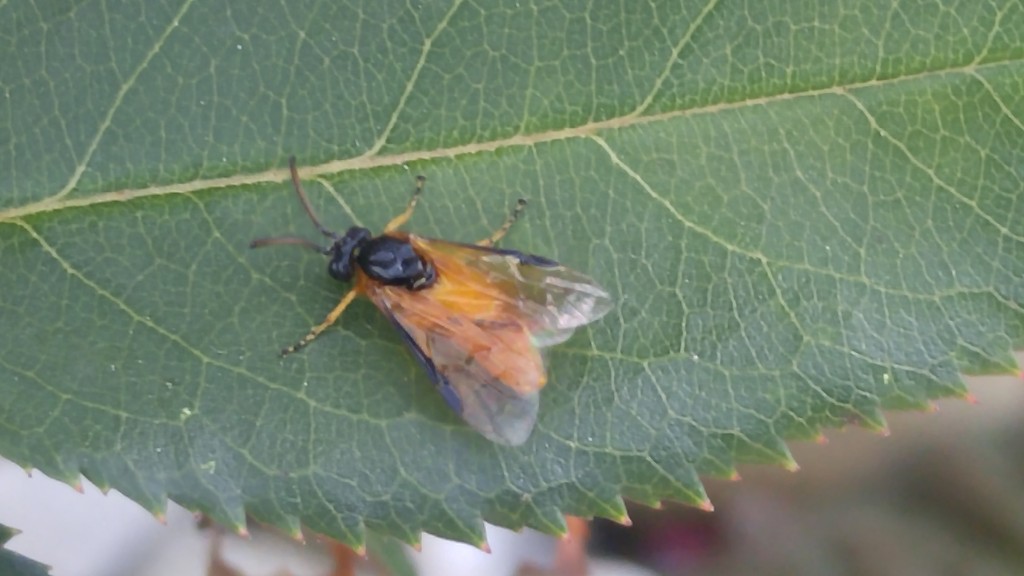A couple of weeks ago while traveling in the west side of the state, we had some extra time on our hands so we decided to turn off the highway and do a little bit of site seeing. We turned on Google maps and it made a suggestion for us based on our location. All it said was “corner of 5th and Clay” and displayed an unflattering photo of a utility pole with some plants behind it. We decided to “bite” and made the detour to 5th and Clay. There we discovered the Monet Garden of Muskegon. It’s a wonderful urban oasis designed, planted and maintained by the Lakeshore Garden Masters an independent garden club based in Muskegon County. According to their website, the garden was planted in 2001. It’s heartening to know that an independent group of volunteers can keep a project like this going for 16 years.
After driving through the city streets it was a bit surprising to see the garden for the first time from my car since we didn’t do a online search for it.
I’ve never been to Giverny to see Monet’s house and gardens so the paintings and published photos are all I have as a reference.
It’s pretty neat to see the designers’ interpretation of Monet’s original. I’m thinking they must have visited Giverny, France.
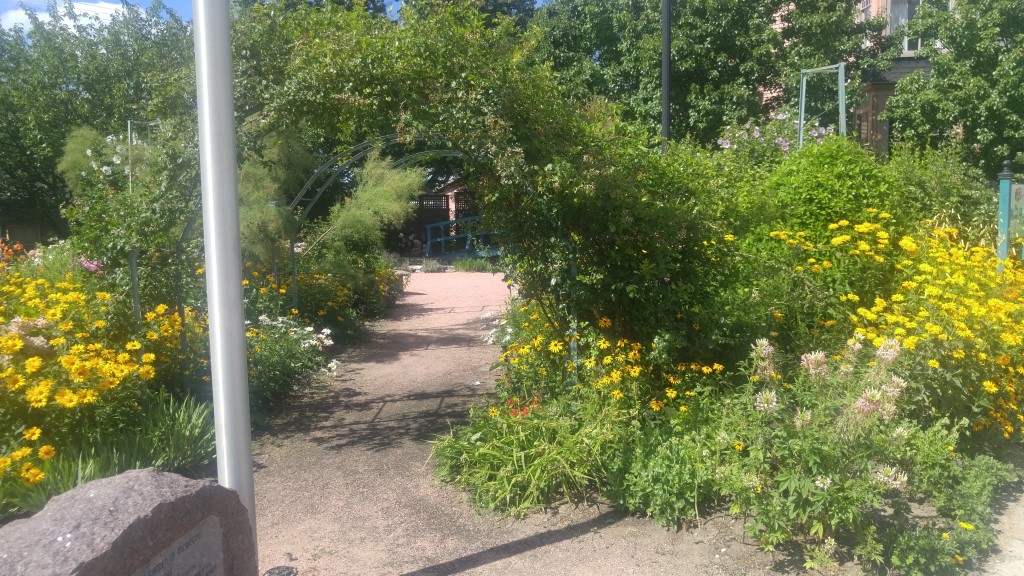
Vertical feature’s like this arch over the pathway gives the illusion that the garden is larger than it actually is.
We spent an hour or so at the garden in the afternoon on a week day and with no other visitors there, we had the whole garden to ourselves. It’s a relatively quiet spot with little car or truck traffic. There’s no cost for admission, you just park in the street and walk through.
Bob
